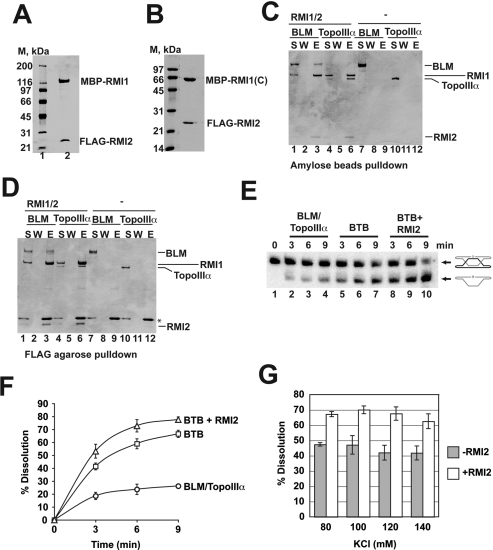Figure 5.
RMI2 stimulates dHJ dissolution activity of the BTB complex. (A) Purified RMI2/RMI1 complex, 3 μg, was analyzed by Coomassie Blue-stained SDS-PAGE. (B) Purified RMI2/RMI1-(C) complex, 3 μg, was resolved by SDS-PAGE and stained with Coomassie Blue. (C) BLM (5 μg) or Topo IIIα (5 μg) was incubated with or without RMI2/RMI1 complex (5 μg), and protein complexes were captured on amylose resin, which was washed and treated with SDS to elute bound proteins. The supernatant (S) that contained unbound proteins, wash (W), and SDS eluate (E) were analyzed by SDS-PAGE. (D) Experiment performed as in C, but protein complexes were captured on anti-Flag agarose. (*) IgG light chain dissociated from anti-Flag M2 agarose. (E) Time course of dHJ dissolution by combinations of BLM–Topo IIIα, RMI1, and RMI2. (BTB) BLM, Topo IIIα, and RMI1 combined. (F) Time course of dHJ dissolution by combinations of BLM–Topo IIIα, RMI1, and RMI2 from five independent experiments presented in the graph. The average values ± SEM. (G) dHJ dissolution by the BTB complex with or without RMI2 as a function of KCl concentration. The histogram shows the average levels of dissolution ± SEM. from four independent experiments.

